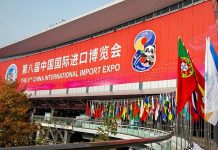Over the past two and half decades, priorities of power generation policy remained focused by increasing generation capacity from expensive thermal sources such as diesel, furance oil and RLNG imported from Qatar at a very high price. The cheapest and sustainable sources of hydel, wind and solar did not figure in the decision making to meet the growing demand at affordable tariff in future. Vested interest took precedence over national interest. The electricity tariff has become unaffordable for all categories of consumers and International Monetary Fund (IMF) is pressing hard for periodic increases in its price, which government has decided to keep freezed till October. The chronic issue of circular debt was created by shady power purchase agreements made with IPPs, containing legally binding clause for the payment of 40 percent idle capacity charges, indexation of tariff of thermal with US dollar, and technical losses in the transmission and distribution system.High power tariff is not only hitting hard the domestic and commercial consumers but it is also taking a heavy toll on the manufacturing sector in the shape of abnormally high production cost. The finished products are losing comparative advantage and are becoming non-competitive in the international market. The installed capacity of electricity generation did increase to 35,972 by the end of April this year but highest in the world tariff has proved bottleneck in creating demand for additional power generation, further increasing the payment liabilities on account of idle capacity charges to private thermal power producing companies. Moreover, additional thermal power generation was the sole priority, totally neglecting the upgradation and expansion of transmission and distribution system. Knowing that the rag-tag system will be unable to pick the additional power generation, the procedural requirements were not fulfilled for the disbursement of $4.4 billion soft loan sanctioned by the Asian Development Bank in 2016. Commitment charges of 0.5 percent are being paid on this loan. It is not surprising that tripping and frequent breakdowns occur in the transmission and distribution system during peak load in summer. Although hydropower of 23000 megawatt from Tarbella extension-4 and Nelum Jhelum hydropower station has been inducted in the national grid yet the balance is tilted towards very expensive thermal power in the overall electricity output. The current energy mix include hydel power share of 30 percent, nuclear 8.2 percent, wind and solar 2.4 percent and thermal power 59 percent. In addition to exorbitant cost of thermal power production in the private sector, flawed power generation policy had landed the previous government in unnecessary and losing litigations in the international court of arbitration. The London Court of International Arbitration (LCIA) had ruled in 2017 in favour of 9 IPPs for the recovery of Rs.14 billion unpaid capacity charges payments. The electricity purchaser, NDTC had filed an appeal in London High Court in May, 2018 against the decision of arbitration tribunal.
© Developed By Kashan Rasheed




